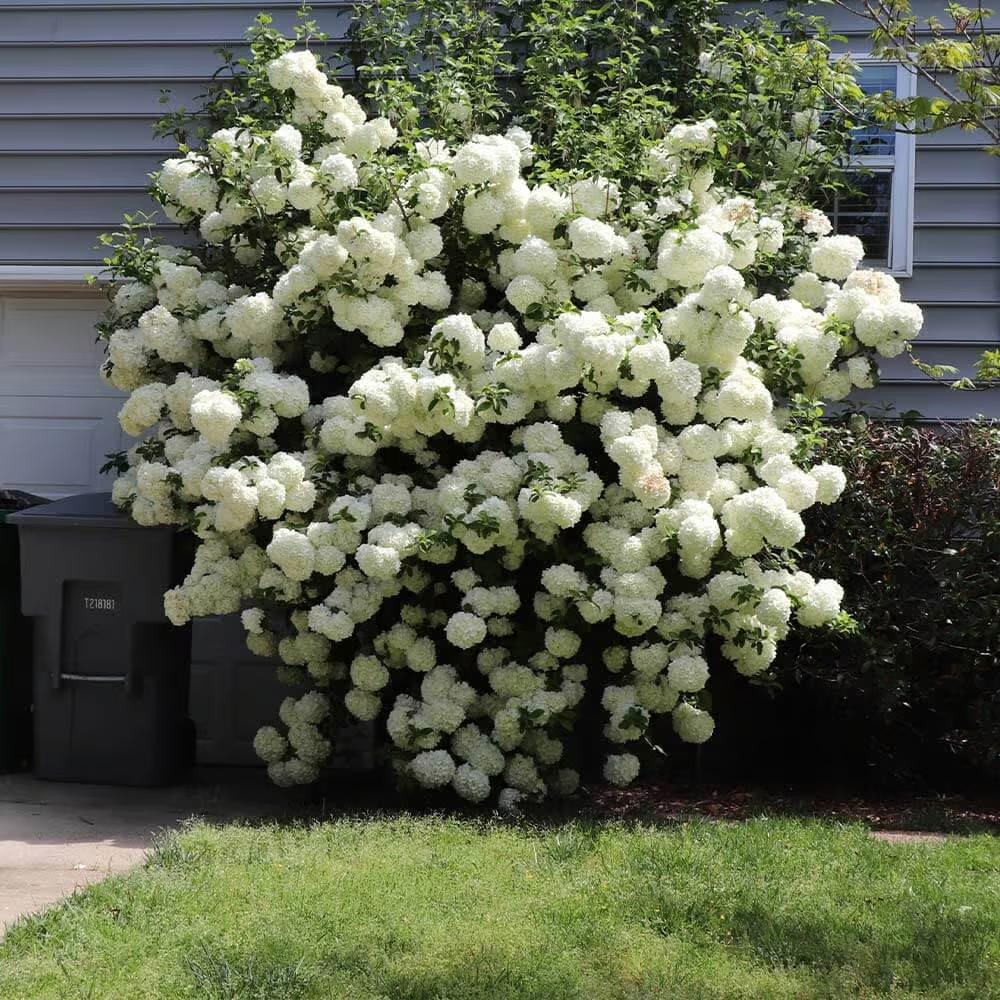Old Fashion Snowball - Viburnum opulus 'Roseum'
Old Fashion Snowball is a showy deciduous shrub prized for its spherical clusters of large, flashy, sterile white flowers that resemble snowballs, adding charm and elegance to gardens and landscapes. It is a versatile and aesthetically pleasing shrub that offers numerous benefits when incorporated into landscaping.
It is a flowering shrub that was a mainstay in residential yards decades ago. Many people may remember these eye-catching shrubs when visiting their older relatives' houses. Of course, if you've never heard of this shrub, you may be surprised to learn that it's been around for centuries. It was first introduced into the United States in the 1700s. Its botanical name is Viburnum Opulus, and it's prized for its large white flowers. Other names for this bush include the Japanese or European bush.
Prized Features of the Old Fashion Snowball
Viburnum Opulus is a flowering shrub. Its large, round flowers, which have a three-inch diameter, are prevalent in late spring and summer. The flowers are initially green, then turn white and sometimes pink. These shrubs can reach heights of between six and 12 feet. In the fall, the green leaves turn red and purple, which helps give this bush three-season appeal.
Best Landscaping Uses For Old Fashion Snowball
Landscapers and gardeners can plant this vibrant bush anywhere they have space in their yard. Due to their lush foliage, they look best along fencelines and as focal points in medium—to large yards. They also make incredible living privacy fences.
It is a great shrub to add if you're looking to attract more bees and butterflies to your home. The pollen and nectar attract butterflies and bees, and the red fruit and its seeds attract birds, which is excellent for the birdwatcher in your family.
Since it can grow to a height of 12 feet, gardeners may want to choose plants to fill the void created by the shrub's stem and foliage. Great plants to plant under the Viburnum Opulus include lobelia, bacopa, and alyssum. Additionally, smaller bushes and shrubs usually do well under the viburnum. Gardeners can also plant vica vines and English ivy around these bushes. Gardeners who want to turn their yards into a botanical show will love the Viburnum Opulus. They're prized for their large round flowers and three-season appeal.
The bushes like the soil moist but not waterlogged and must be watered routinely during dry periods. Prune after flowering to be able to manage their size and allow for proper growth. Putting another layer of, say, leaves or wood chips around the plants aids in water retention and prevents weed growth.
The bush has a rounded ball-shaped flower mass that can be white or light green in color. It flowers in spring and sometimes autumn, contributing greatly to the aesthetics of the garden or landscape.
They grow to around 8 to 12 feet in height and widths of 10 to 15 feet, creating a broad, rounded shrub. Due to their size and thick leaves, they can be used for hedging, screening, or as an accent in any gardening layout.
They need full sunlight to partial shade and grow well in fertile and well-draining soils. They are hardy perennials that thrive in the USDA growing zones 3-8 and should be planted in a location that is shielded from winds that otherwise can harm or destroy its finely textured flowers.
Proper fertilizer for Old Fashion Snowball is a slow-released fertilizer option, like 10-10-10. It should be applied before the new shoots come out in early spring and mid-summer. Do not fertilize the plant frequently because it promotes more foliage growth than flowers.
